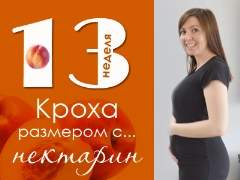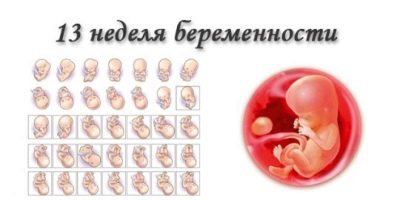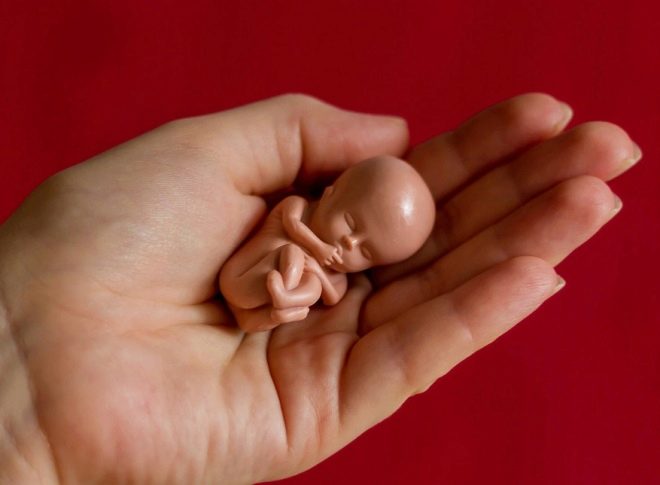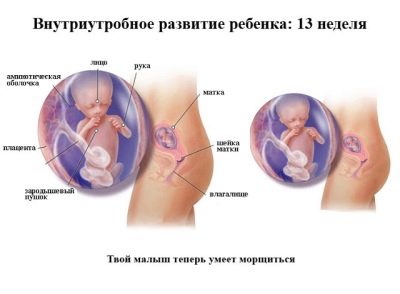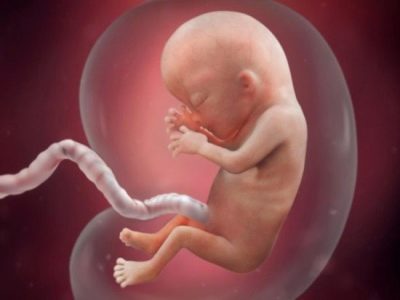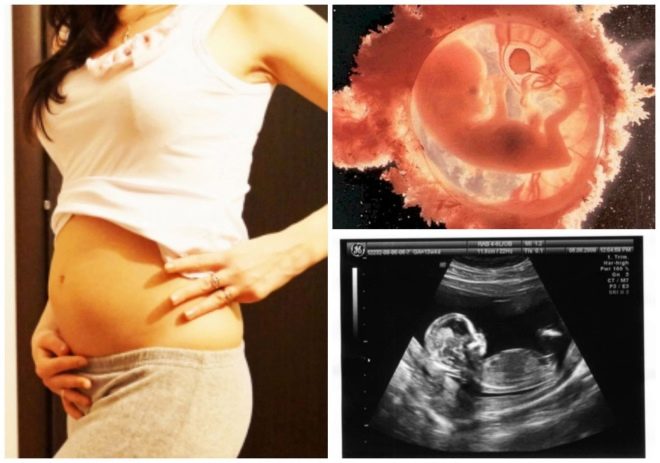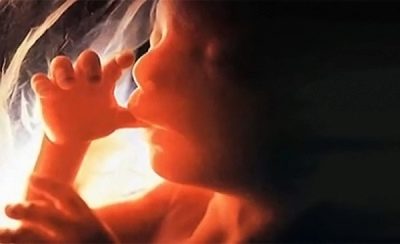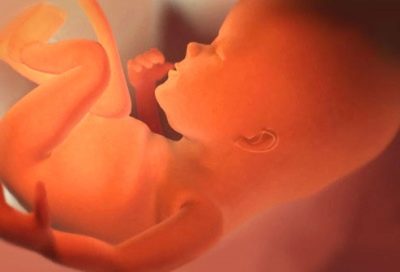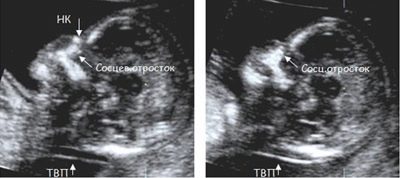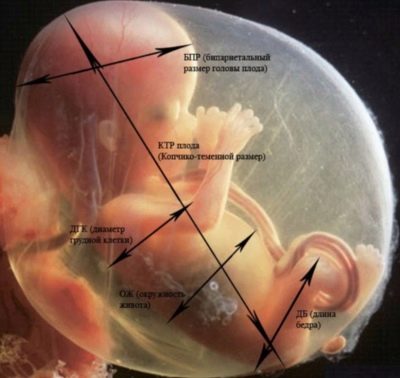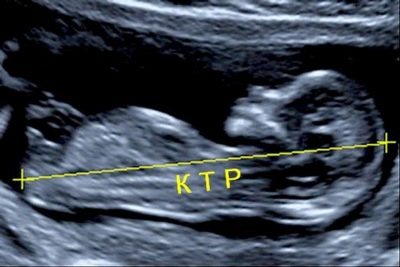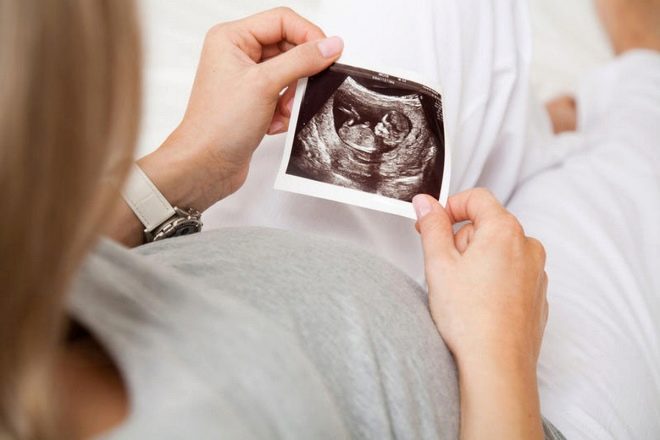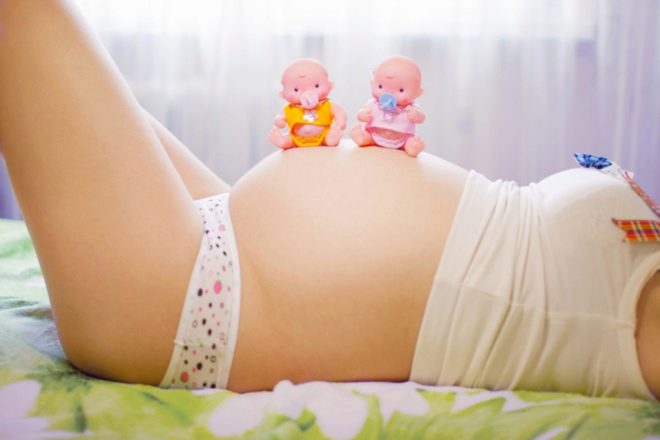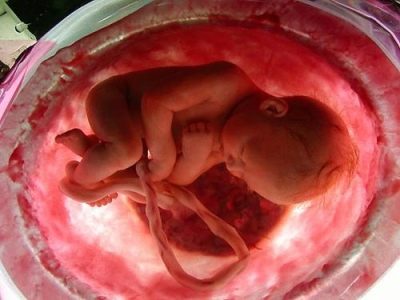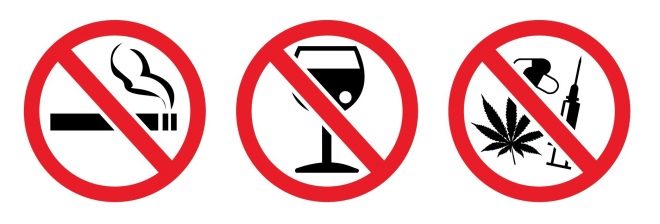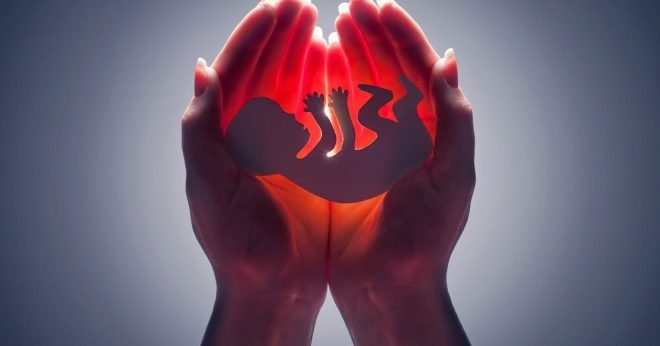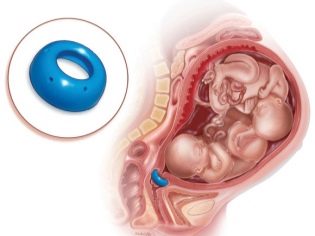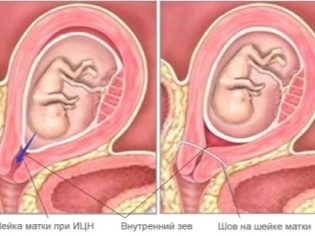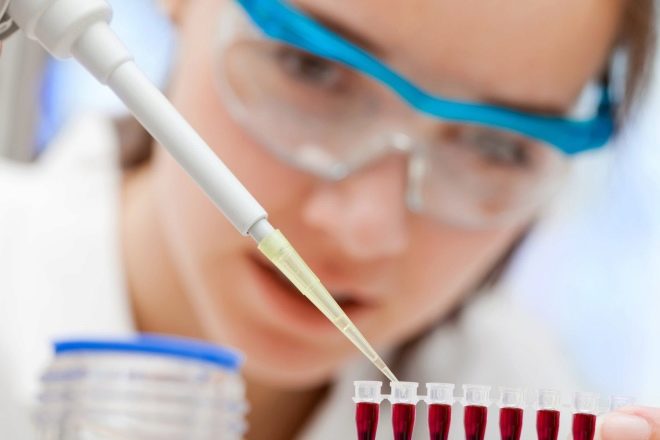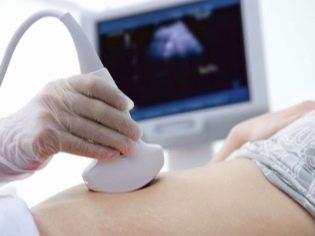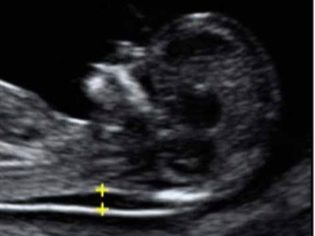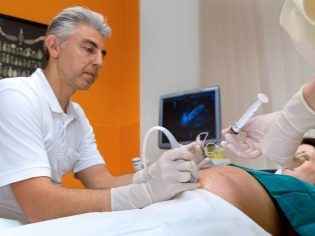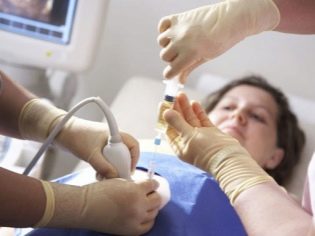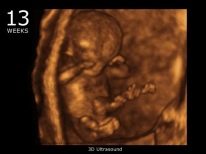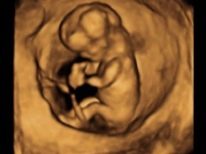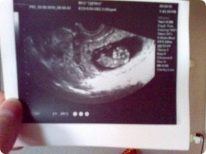13 week of pregnancy: what happens to the fetus and the expectant mother?
13 week of pregnancy finishes first trimester and opens the second. This is a time of great changes in the feelings of the future mother and a new stage in the development of her baby. This week is considered the most informative for the first prenatal study, which is called “screening”.
How many months is it
By the 13th obstetric week, women are already well-versed in how pregnancy time is calculated. Doctors always put a period longer than the actual approximately two weeks. This is the obstetric period, and the difference in 14 days is the time elapsed from the first day of the last menstruation period before pregnancy to the expected ovulation.
If the 13th obstetric week has started, this means that Now it is exactly 12 weeks according to the medical standards for calculating the period of gestation, that is, 12-13 weeks are going, and from conception passed 10-11 weeks. 11 embryonic week corresponds to obstetric 13. The fourth lunar month began (in each of them exactly 4 weeks). In calendar terms, it took almost three months.
Baby development
The fetal period of the development of the baby is in full swing. 3 weeks have passed since he stopped being an embryo and became a fetus. With the beginning of this period, the baby every day becomes more and more like a little man. He no longer has a tail - he turned into a tailbone. The formation of internal organs is completed - now they will only grow.
Now the kid in size resembles a decent onion. His height is within 7-10 cm. The baby weighs more than 20 grams now.
Appearance
The baby looks very thin and wrinkled. This is due to the fact that while he has no subcutaneous fatty tissue. The skin is very thin, see through them capillaries and larger blood vessels. Gun hair grows on the baby's head, they are still light-colored for all children, because the pigment that dyes hair in one or another color has not yet been developed.
The head of the baby is still quite large in relation to the body. It averages half the total area of the fruit. This disproportion will disappear with time, and by the time of birth the baby’s body will be five times larger than the head.
Begin to level the proportions of the arms and legs. Earlier, the handles were short, but now this week they are noticeably increasing in length, and the legs are starting to grow. The lower limbs are still significantly shorter than the upper ones.
The fingers and toes are completely formed, each of them is crowned with a small nail. The child has completed ear formation, and from this week he begins to hear, but so far the ear is more vibratory in nature, because the formation of the inner ear is still continuing.At about 20 weeks of gestation, this process will be completed, and the sound waves will begin to transform into sounds familiar to each of us.
The eyes, which were previously located on the sides of the head, have already moved to their proper place. The eyelids have formed - now they tightly cover the organs of vision. There is already a nose on the face, and some children who, by race or genetic prerequisites, are owners of an outstanding nose, these bones are already so large that a profile with a pronounced, well-defined structure is easily visible.
The neck is already formed - the baby can turn the head. All internal organs are located in their places, nothing looks out of the abdominal cavity. Appearance crumbs begins to acquire individual traits.
Internal organs
Since all the bodies are already formed, now the process of their growth is underway, and also they are “learning” to work correctly, become more complex, developed. The gallbladder produces bile at week 13, and the pancreas began producing insulin two weeks earlier. The intestine is rhythmically reduced, and this is almost a real motility, despite the fact that the baby in the usual sense is not yet eating.
In its structure, a small heart completely repeats the heart of an adult: it has four cameras, but it knocks much faster. Heart rate (HR) this week is from 140 to 170 beats per minute. During the day, the heart of the fetus pumps about 23 liters of blood. The kidneys work at full capacity: they produce urine, accumulate it, and the urinary system takes them outside to the amniotic fluid. The kid often writes: almost once an hour.
Nervous system
The nervous system continues to improve. At the physiological level, it is fully laid, there is the brain and spinal cord, but here the functional processes are still in their infancy. The impulses from nerve endings take the spinal cord for now, but soon the brain will start doing it. In the meantime, it is the formation of brain tissue, and this process is very fast: 250 thousand new cells are formed in the brain of the fetus at week 13 daily.
Special channels of communication between the muscles and the nervous system continue to form. The baby already has several reflex skills in the arsenal: he shudders, the sucking and swallowing reflexes have already been studied, his hands are clenched into fists, he has a grasping reflex. Taste buds already “pick up” flavors: If a mother eats a sweet, the child will definitely notice a change in the taste of the water - he will swallow this amniotic fluid more readily.
If the water is bitter, because mom ate onions and garlic, then the taste will not be very pleasant baby - he will not swallow them.
Baby movements are becoming more active. Most of the time he is in a dormant state, which resembles a dream. In periods of wakefulness, the baby "has fun": it embraces itself, plays with the umbilical cord, studies its face by touch and floats. Moms do not feel any movement yet - there is enough space in the uterus.
Gender
Formed external genitals of the baby. The boys' genital tubercles have lengthened, now it is a small penis. And girls this week, genital tubercles begin to bend and shrink, turning into the labia.
But it is still quite difficult to find out the sex - the sex differences in size are small. An experienced doctor, of course, will be able to see the difference if an ultrasound scan is done on a device with a good resolution, and the baby is conveniently located for an examination. But the doctor is not yet able to call the child’s gender as guaranteed - the probability of an error at this time is large enough.
At the 13th obstetric week, the most global changes occur in the genital system of girls. Their ovaries descend into the pelvis, they already have about 2 million eggs. In boys, the formation of the prostate gland continues.
Bone system
Since the thyroid gland has been diligently developed over the last weeks and has begun to work, calcium deposits have begun in the bones of the baby, and they become stronger. The first to begin to strengthen the bones of the skull and spine, followed by the bones of the limbs. This week, the baby appear ribs.
Right now, the need for calcium for mom and fetus is great. If the baby misses him, he will begin to take calcium from the mother's bones. As a result, the woman will deteriorate the quality and type of nails, hair, teeth. By the way, the beginnings of the baby’s milk teeth are already fully formed, and now they will be waiting in the wings.
Respiratory system
The respiratory system in a child is already developed. This week, he is starting to try breathing. The rib cage expands so far irregularly, but with each passing day the respiratory contractions will become increasingly regular. After the birth of a baby on an intuitive level will know how to breathe.
The glottis is still closed. The vocal cords at the 13th week are actively formed so that after birth the baby announces the birth of a loud cry. In the lungs, surfactant, an important substance for respiration, is not yet produced and does not accumulate. The baby will start preparing for independent breathing in the middle of the third trimester.
What can do baby. Despite the fact that the fruit is still very small, it is actively developing its skills. Now the crumb reacts to external stimuli. If the mother begins to cough or speak with someone on high tones, then the baby will get a special vibration, and he will feel the changes in her mother's mood.
It is still unknown how children at such a time manage to feel fear, pain and joy. But numerous studies that covered the category of pregnant women who are going to have an abortion during this period showed that the child perfectly feels all the mother's emotions, feels pain. If he is hurt, he opens his mouth in silent crying, and if it is scary, he tries to “hide”, shrink.
Scientists believe that The relationship between mother and baby is now based on changes in the composition of maternal blood. When emotions change, her hormonal background changes subtly, that is what the child feels.
At week 13, the kid makes a little variety of grimaces - his facial muscles are already sufficiently developed for this. He learned to put his fists to his mouth and tries to suck them, he is good at yawning, hiccuping, and having a hard time after sleep. It is a special pleasure for him to play with his own umbilical cord: he grabs it and feels it.
Baby on ultrasound. An ultrasound scan this week is performed as part of prenatal screening, if it has not been done before. The deadlines set by the Ministry of Health for this diagnostic event allow screening this week. This ultrasound can be the first "meeting" of the future mother and her baby. Now on the monitor of the ultrasound scanner it is already possible to examine in detail the profile of the crumbs, spout, eyebrows, small hands, legs, to listen to the heartbeat. All this makes women a real delight.
The doctor during the study assesses the viability of the baby, its size and relates them to special tables, according to which it is possible to judge the exact duration of pregnancy and the characteristics of the development of the fetus.
Still informative remains KTR (coccyx parietal size), in essence, representing the segment between the coccyx and the dark. Some physicians do not measure CTD this week, since it becomes more informative from the point of view of determining the duration of BPD - bipariented (the transverse size of the baby’s head), measured between the temporal bones.
This week it is already possible to measure the length of the femur bones, but the bones of the leg and shoulder are still so small that it is impractical to measure them. Not measured and SVD - the diameter of the ovum, because two weeks ago it exceeded 50 mm and became too large to measure.
For the full 12 weeks and the following six days, the following norms are characteristic:
Table of average values of fetometry at week 13 (12-13 weeks)
BPR, mm | LZR, mm | Thigh length, mm | Shin length, mm | Shoulder length, mm | Forearm length, mm |
21-24 | Not determined | 7,3-9,4 | Not determined | Not determined | Not determined |
Those who have been measured with KTR will be interested to know if their baby meets the average standards. These values for week 13 are:
KTR on the 13th week of pregnancy
KTR value, mm | What corresponds to |
52-54 | 12 weeks exactly |
53-55 | 12 weeks and 1 day |
52-57 | 12 weeks and 2 days |
58-59 | 12 weeks and 3 days |
60-61 | 12 weeks and 4 days |
62-63 | 12 weeks and 5 days |
64-65 | 12 weeks and 6 days |
66-67 | 13 weeks exactly |
The abdominal circumference of the baby on this period is on average from 61 to 69 mm.
The placenta has already fully assumed all responsibilities for the nutrition and protection of the child, and now, if the need arises, the woman can take medicines that were not previously recommended to her, as the embryo's internal organs were being laid and the protective barrier was absent. The thickness of the placenta at this period is from 15 to 18 mm, but it is not yet measured by ultrasound, because its thickness will have a diagnostic value no earlier than at week 20 and later
Feelings of the future mother
The sensations of a woman this week are ambiguous - on the one hand, she is happy and proud of the growing belly, and on the other she comes the understanding that the child is serious, and, accordingly, all the associated anxieties appear: will there be enough strength, experience, money for to grow it. Especially strongly about this usually worry women who are pregnant with their firstborn.
Since the first trimester can be considered complete, the hormones are somewhat “calming down”. Progesterone and estrogens have accumulated in the female body in sufficient quantities, now their production is not so strongly felt pregnant. Therefore, the future mother begins to leave the symptoms of toxemia, her appetite improves, her night sleep becomes more intense, and she has a little daytime sleepiness. In general, her state of health improves, the signs of indisposition cause her to feel less and less.
If in the first trimester, the woman suffered from increased salivation, now saliva begins to produce slightly less. Dizziness and nausea gradually disappear.
Significantly growing belly. Tummy and hips already look rounded, and many women can no longer hide their position. At this time, even superstitious women, who were afraid to report their situation earlier, are no longer afraid to disclose this important information and bring the fact of their pregnancy to friends, colleagues and relatives. Understanding the fact that the threat of miscarriage and a critical period is over makes a woman more confident and calm.
A growing tummy begins to demand a change in habits from a woman. Sleeping on the stomach is now uncomfortable, and for sexual relations one has to choose new positions. Many women note that they have become uncomfortable for a long time to lie on their backs - the growing uterus begins to squeeze the inferior vena cava. This week, the woman already understands that those things that she wore before the pregnancy no longer converge at the waist, tight in the hips and breasts.
It is time to change your wardrobe to a more spacious one, and the usual bra should be changed to a more extensive bodice with wide shoulder straps that will hold the growing chest.
The mood, which previously was characterized by instability, is now beginning to “level off”, a woman becomes more balanced and calm, but she can be forgetful and scattered. All these metamorphoses are caused by the effect of a new hormonal background on the brain: everything in the woman’s body adapts to the needs of the child. The baby now needs a calm and peaceful mother.
And yet the woman still remains quite sensitive.This week you should not communicate with people who like to talk about their hard experiences of childbirth and pregnancy, to describe in paints all the horrors of the birth process and possible dangers. Someone else's experience is too close to the heart of pregnant women, especially if they are carrying their first child. Such stories can cause unnecessary stress, tears, fears and anxiety.
It is also not necessary to “wind up” yourself about the upcoming screening. No matter how frightened other pregnant women are from the pages of the forums, there is nothing wrong with this diagnosis. If you correctly understand its essence, the excitement will be minimal.
Domestic conflicts and quarrels should be avoided. because the baby can already respond to stress factors from the outside. If there is no one to communicate in confidence, right now a woman can turn to a psychologist who conducts a free appointment at any antenatal clinic.
The growing uterus begins to mechanically squeeze the intestines, which is why now the most urgent problem of pregnant women is constipation. Improve well-being will help proper nutrition. It will also save the woman from one more trouble of the beginning of the second trimester - possible hemorrhoids. At the beginning of the 13th week, the expectant mother can pay attention to the fact that she has cramps in her calf muscles. Thus, calcium deficiency manifests itself, the need for which at this period has increased significantly.
This week, women who monitor their blood pressure may notice that their blood pressure is dropping. This is normal, because now in the body there is another circle of blood circulation (uteroplacental). Usually, a little natural hypotension causes no unpleasant symptoms.
If the pressure falls below the norm, then it can manifest weakness, dizziness, loss of consciousness. Be sure to consult with your doctor.
The hormone progesterone, which “tried” for the entire first trimester, continues to have a systemic effect on the female body. Now most often he becomes the "culprit" of frequent urination. Sometimes women continue to complain that they have a headache in the evenings. Because of the hormonal effect on the digestive system, a woman may experience heartburn, alternating constipation and loose stools. And the property of progesterone to retain fluid in the tissues can cause the physiological rhinitis of pregnant women, such rhinitis does not need a separate treatment, since it passes by itself.
Small slack sensations in the lower back and back at week 13 can be considered quite acceptable, because the uterus is growing, and the ligaments holding it stretch. If the loin hurts and it pulls, and it does not last long, and is also not accompanied by abnormal secretions, then there is nothing to worry about.
Emergency medical care should be consulted if the pain is severe, increasing, cramping.
At week 13, it becomes much easier to carry a heavier and larger chest. The mammary glands cease to disturb the woman much: to hurt, itch, itch. The active growth of glandular tissue is replaced by the preparation of ducts for breastfeeding, but this process is not accompanied by pain, although colostrum may begin to stand out. If your chest has not ceased to hurt this week, then you should be patient and wait another 7 days - usually by week 14, unpleasant symptoms subside to the full.
Changes in the body
The main change in the female body at this time is the intensive growth of the body of the uterus. The size of the uterus has increased almost 4 times, in length the uterus has grown by 10 centimeters. In multiparative women, the uterus is heavier, it grows faster, and therefore the main visual symptom of pregnancy - the stomach - is also manifested faster. In women who are carrying twins, the stomach is already impressive.
Changing and location of the uterus. She went beyond the pelvis, is now in the abdominal cavity.The normal height of standing of the bottom of the uterus at week 13 is about 11-12 centimeters.
The uterus becomes softer, more elastic, it is normal, does not come in tone, which ensures its growth, and the amount of vaginal discharge increases. You should not be afraid of it.
Light, white or yellowish discharge, having a weak sour smell, is considered perfectly normal for this period. However, a woman should be extremely vigilant and watch their character - any change in color, smell, and consistency of vaginal secretions can be a sign of pathology.
Green and gray, as well as brown discharge of foamy consistency with an unpleasant odor can indicate the presence of infection, including sex. Thick discharge of white color, accompanied by a yeast odor and itching in the perineum, may indicate that a woman has a thrush. This happens at week 13 rarely, because thrush is a companion of early and late terms of gestation, but this possibility is not completely excluded.
The amount of blood that circulates these days in the body of the future mother, has increased about 2 times. Now the load on the lungs, kidneys, the heart of a woman has doubled. This may be manifested by the exacerbation of chronic diseases of these organs, if such diseases were in a woman before pregnancy. But even healthy pregnant women at this time feel an increased heartbeat. With little exertion, dyspnea may occur.
The chest is now big and very beautiful. It is not spoiled even by the Montgomery tubercles protruding from the circles around the nipples and the darkening of the circles themselves. Nipples may turn white. This occurs when the nipples are irritated by underwear and a small amount of colostrum, which, drying out, creates such a white color. From this week you need every evening to wash the nipples with warm water to avoid inflammation and blockage of moves.
Weight gain at week 13 may be different. In general, it is considered normal if from 2 to 4 kilograms was added to the initial body weight of a woman. The pregnancy hormone hCG is at its maximum, peak point. From the end of this week, the level of this hormone will begin to gradually decrease, and this process will last until the birth.
A woman whose pregnancy is now without complications, looks very attractive. In her appearance appear mysteriousness, spirituality and charm. Her hair shines, nails grow faster, skin becomes smoother and healthier. Some women begin to develop pigment spots on the back, neck, hands this week. Freckles in women often become brighter, but even this does not spoil their amazing, feminine beauty.
Possible complications
The list of problems and risks that may threaten the expectant mother at the 13th obstetric week of pregnancy is markedly reduced. The probability of miscarriage is now low, as is the probability of a sudden causeless fading of the fetus. But it is impossible to completely eliminate such risks. Below is a list of complications that pregnant women may face at week 13.
Intrauterine growth retardation
According to the results of the first ultrasound this week, a lag in the development of the baby may show up. If no mistake is made with the timing of pregnancy, doctors will definitely try to find the true cause of the slow growth of the fetus. A slight lag has nothing to do with the delay, but if the baby’s parameters are 2 weeks less than the norm, doctors talk about the likely IUGR - intrauterine growth retardation.
With a symmetric delay, when all the proportions of the baby are reduced relative to the norm equally, consider such options as the failure of the placenta or pathology of the umbilical cord, as a result of which the baby simply receives less nutrients and oxygen.Delayed fetal development can be observed in mom-hypertension, suffering from hypertension, heart and vascular diseases, as well as in women with chronic problems with the respiratory system.
In case of asymmetrical delay, when some size is in obvious disproportion with the others, the most probable is considered the version of the developmental defects of the baby, including the genetic ones. The reason may lie not only in the chromosomal disease, for example, in Down syndrome, but also in the defects of the structure of the kidneys, of the heart, if during the laying of these organs something went wrong.
The reason that the baby grows more slowly than its peers can be a woman’s inadequate nutrition, a deficiency of vitamins in her body, and bad habits: smoking, alcohol, narcotic substances.
Often with a slowdown, the baby “responds” to mom’s first trimester infectious diseases.
Undeveloped pregnancy
Missed abortion or missed abortion can occur at any time up to 28 weeks. With the increase in the likelihood of such a sad outcome decreases. Doctors noticed that most often the fetus stops its development and dies at an early period - from 3 to 4 weeks, then during the transition from the embryonic to the fetal phase of development - from 8 to 10 weeks. The third “dangerous” period begins from 16 and lasts up to 18 weeks. In spite of the fact that week 13 is not included in these periods, the probability of fetus fading is also real at this time.
Symptoms may not be. In this case, only 2-3 weeks after the baby’s death, the first signs can appear: brown daub, nagging pains, all signs of miscarriage. If pure blood has gone, then this may indicate that a miscarriage took place. But most of the missed abortion is detected on an ultrasound scan that is being done this week.
Any adverse factors that a woman has undergone can lead to the death of a child: infections, taking medications that are not allowed during pregnancy, placenta malformations, bad habits, a sudden "jump" in hormones.
Cervical insufficiency
Such a pathology is said if a woman’s cervix begins to shorten and smooth out earlier than the prescribed time. The task of this part of the genital female organ during pregnancy is to tightly close the entrance to the uterus, not to allow the child to leave it earlier than the deadline. In case of insufficiency of the cervix uterus, there is a threat of abortion. If now the neck does not cope with its task, the child will die, because he still can not live on his own, outside the womb.
There are no pathology symptoms, a woman may not feel anything unusual, and only on an ultrasound scan at 12-13 weeks a doctor can detect pathological changes in the cervix. The causes of the phenomenon can vary from congenital features of the cervix to traumatic changes caused by abortions or gynecological operations associated with mechanical expansion of the cervix. Often, pathology develops in women who have undergone severe childbirth.
The treatment of cervical shortening is quite a lot. The short neck, of course, cannot lengthen, but it can be fixed by suturing or installing an obstetric pessary. In most cases, a woman quite successfully manages to bring the baby to a deadline.
Hypercoagulation syndrome
Blood coagulation or hypercoagulation syndrome this week can be detected by the results of a coagulogram - an analysis that determines blood clotting. It is prescribed for pregnant women when registering. Too thick blood of a woman can be due to increased stress on all organs and systems, primarily on the heart and blood vessels. If a woman has been tormented by severe toxicosis with vomiting and intoxication during the first trimester, the risk of hypercoagulation syndrome is great.
At the beginning of the second trimester, hypercoagulation may occur in every second woman, and in most cases she is considered as a variant of the norm. The body of the pregnant woman begins gradually and in advance to prepare for childbirth. To prevent heavy bleeding, the blood coagulation system begins to work in new conditions.
At the first detection, doctors will prescribe control over the state of the blood. If the increased coagulability is detected in the future, then the woman will be prescribed a treatment. Thick blood can be dangerous primarily due to an increased likelihood of thrombosis and premature aging of the placenta.
At week 13, it is not worth sounding the alarm, the revealed hypercoagulation can be physiological.
Analyzes and surveys
If the screening has already passed a week earlier, no tests will be scheduled this week. If a referral for prenatal diagnosis is issued at week 13, then the woman will have to donate blood from a vein and make an ultrasound scan in one day - these are the obligatory conditions for the first screening.
The objective of this study is to identify women at risk in terms of the probability of having a baby with chromosomal abnormalities. In the blood of a pregnant woman, the proportion of the hormone hCG and plasma protein PAPP-A will be assessed. On ultrasound, in addition to assessing the overall development and examination of the internal organs of the fetus, will pay close attention to the so-called markers of chromosomal anomalies - visual signs of deviations. Down syndrome and a number of other diseases, the risks of which are evaluated during screening, for example, tend to thicken the collar space - folds in the back of the neck.
Most genetic pathologies are characterized by flattening and deformation of the facial bones, and this can be traced by ultrasound on the size of the nasal bones.
The rate of the collar space and the length of the nasal bones in a supposedly healthy baby at this time is as follows:
Gestational age | TVP, mm | The length of the bones of the nose, mm |
12-13 weeks | 0.8-2.5 (on average, 1.6) | 2.0-4.2 (average 3.1) |
The blood levels of hCG and PAPP-A can be laboratory-evaluated in different units of measurement, and the standard values in different laboratories may differ from each other. To simplify the use of the concentration, expressed in units of the median - MoM. Normal values are HCG and PAPP-A at the level of 0.5-2.0 MoM.
Alone, the results of ultrasound and blood tests are little to say. Only a summary of the information that a special computer program processes gives an idea of how likely the birth of a sick child is. It is expressed in a fraction - 1: 3000 or 1: 350. This fraction means that the chance to give birth to a child with a particular chromosomal anomaly in a woman with similar indicators is 1 in 3000 or 350 births. High risks are considered to be risks in the region of 1: 100.
“Bad” screening - what to do?
If the screening shows increased risks of the birth of a sick baby, then you should not panic, because the results of prenatal diagnosis are just a prognosis, and not a diagnosis. Any negative "findings" on ultrasound or in the laboratory - the basis for a visit to genetics. This specialist will once again check all the data and may recommend a woman to undergo an additional examination, which will be able to answer with great precision the question whether the child has chromosomal abnormalities and anomalies.
In such situations, invasive diagnosis is recommended - chorion biopsy, a little later - amniocentesis. With the help of a special long needle through the puncture in the anterior abdominal wall, amniotic fluid (for amniocentesis) or chorionic particles are taken for analysis. DNA establishes whether the child has anomalies.
These methods are very informative, but unsafe for the mother and fetus. The procedure can result in infection of the fetal membranes, miscarriage, mechanical injury to the child. Modern medicine offers an alternative - non-invasive DNA test.
In the sample of venous blood of the future mother, fetal red blood cells are found, which begin to get there from about 8–9 weeks of gestation, from which the baby’s DNA is derived. The procedure is no different from the usual blood test and does not harm the fetus and mother, but is expensive - several tens of thousands of rubles.
After the additional diagnostics shows the true picture, the woman herself and her close people will decide what will happen next with this pregnancy.
If the baby has pathology, then the woman is recommended to terminate the pregnancy for medical reasons. But she has the right and deliberately refuse it. In this case, the pregnancy continues further, as usual, and if necessary, the mother and the baby receive supportive therapy.
Recommendations to the future mother
As in the first trimester, all the basic recommendations remain valid, the observance of which will help a woman to calmly communicate and give birth to a healthy baby. This is a daily walk in the fresh air, a healthy diet, a healthy lifestyle. This week you can add to the list of recommendations only a few points.
Calcium
Since the need for this mineral increases with the onset of fetal bone growth, it is now expedient to talk with your doctor about the possibility of additional calcium supplements. Do not buy them at the pharmacy and start drinking on their own. If a woman does not have calcium deficiency, such actions can lead to an overabundance of mineral, which is fraught with complications with the kidneys and metabolism.
The doctor saw the results of the biochemical analysis of a woman’s blood, he knows exactly how much calcium is in her blood. If necessary, an additional amount of the mineral, he will recommend calcium supplements and indicate in what dosage it should be taken.
All pregnant women need to include calcium-rich foods in their diet this week. These include cottage cheese, milk, dairy products, sea fish, fresh greens, spinach, nuts. In most cases, this allows you to dial the required amount of an important substance without pharmacy drugs.
Sex
Sex this week is not contraindicated if the woman does not have the threat of a regional presentation of the chorion and other complications that can lead to a miscarriage of the child. Do not be shy, because the question of whether you can live an active sex life be sure to ask this term to your doctor. If everything is normal, then he will have nothing against it.
Sex helps a woman to feel better: stabilizes the emotional and psychological background, improves family relationships. But now you should carefully consider your own feelings and the choice of posture. All positions with deep penetration and the use of lubricants are now prohibited.
Nutrition
If a woman has a stomach ache or there is pain in the left side or right hypochondrium, it is important to consult a doctor in time and adjust the nutrition. At week 13 you can not eat sodas, fried, salty, fatty, smoked and pickled. The more in the diet of the future mother will be vegetables and fruits, the better. The intestine begins to be compressed by the growing uterus and needs fiber, which will not allow constipation and hemorrhoids.
Diseases and drugs
If all security measures did not help, and the woman got sick a cold or ORVI on week 13, you shouldn't worry too much. The baby is already formed, the likelihood that the temperature and the drugs taken will have a negative impact on him is not as high as in the first trimester. The placenta is already coping with barrier functions. This does not cancel consultation with the doctor, and all medications should be taken only as directed.
This week you can go to the dentist and heal all problem teeth, if necessary. X-rays are also banned, but gentle anesthesia is already acceptable.
Women reviews
About 13 weeks of pregnancy, women left a lot of feedback in specialized forums on the Internet. Most of them are dedicated to improving well-being. Some this week begin to keep diaries of pregnant women, where they bring their weight, blood pressure, basal temperature. All these data will help the doctor, who so far sees a woman once a month at a scheduled reception, it is better to imagine what happens to the future mother during this month.
Ultrasound pictures that appear from this week in the family album, experienced mothers advise asking the doctor for electronic media, because the baby’s paper “photos” very quickly lose their color and image clarity due to the quality of the paper.
The electronic snapshot is a guarantee that the image of the crumbs in the 13th week of pregnancy will remain for many years and will remind the parents of nine months of waiting, one third of which is already behind.
About what happens in the 13th week of pregnancy, see the next video.
